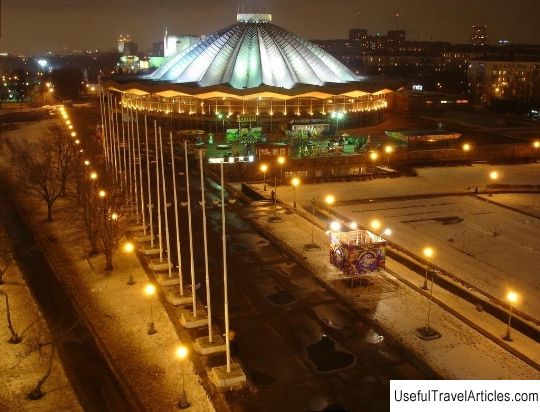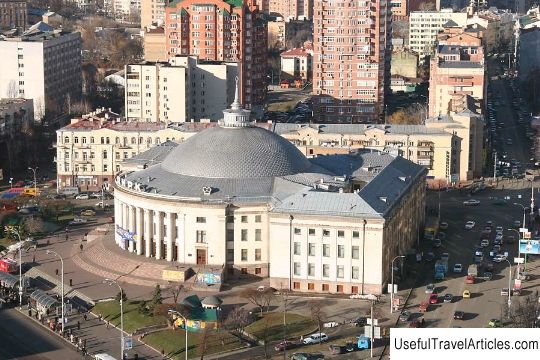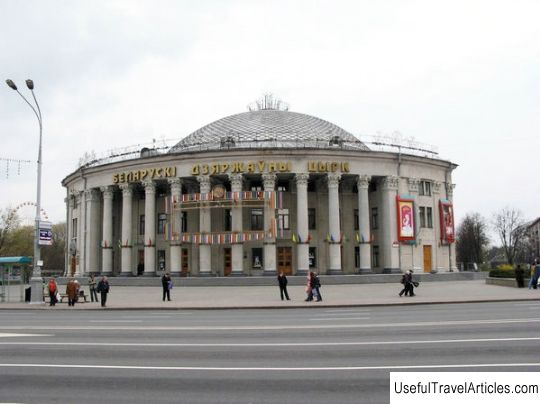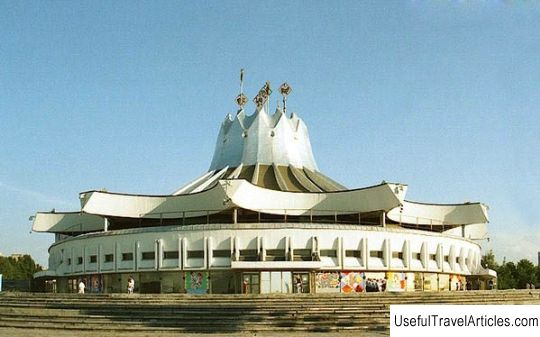Big St. Petersburg State Circus description and photo - Russia - St. Petersburg: St. Petersburg
Rating: 7,7/10 (214 votes) 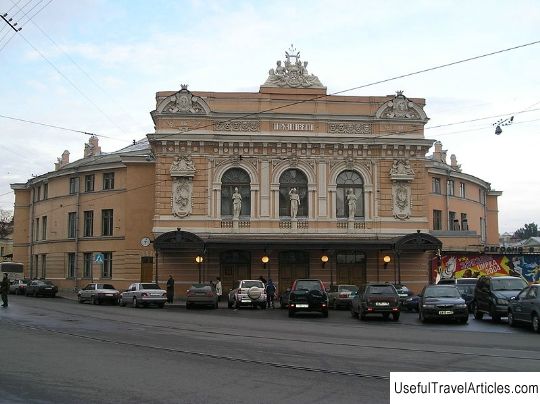
Big St. Petersburg State Circus description and photo - Russia - St. Petersburg: St. Petersburg. Detailed information about the attraction. Description, photos and a map showing the nearest significant objects. Photo and descriptionThe Big St. Petersburg State Circus is located on the Fontanka. This is one of the oldest circuses and the first stationary stone circus in Russia. The wooden building of the circus was erected in 1867 by P.P. Mizueva and R.B. Bernhardt in the center of Manezhnaya Square. The construction was carried out by Karl Guinne. On December 26, 1867, the first circus performance took place, in which K. Ginne's sister Wilhelmina performed. In 1875, her husband Gaetano Ciniselli (horse trainer and rider, head of a circus family) received permission to build a stationary stone circus near the Simeonovsky Bridge in Engineering Square (in front of the Mikhailovsky Castle). It was here that the Turner circus was located since 1827. The building stood in this place until 1842, when due to dilapidation it was broken. The first stone stationary circus was opened on December 26, 1877. Its building was built according to the project of V.A.Kenelya and is a unique technical structure of its kind, which was made on the basis of advanced engineering technologies for that time. During the construction of the dome with a span of 49.7 m, for the first time in the world, the internal columns supporting the dome were not used, which made it possible to create an unusual spatial effect. Subsequently, this new technical solution was widely used in the construction of such structures. The interior decoration of the circus was performed with special luxury. The decoration of the auditorium combined gold, crimson velvet and mirrors. The seats in the stalls and boxes were designed for 1.5 thousand people, the occupancy of the hall sometimes reached 5 thousand spectators. Artists who have seen many circuses during their European tours, called the St. Petersburg circus one of the most beautiful in Europe. The Ciniselli Circus soon became one of the main St. Petersburg attractions and took the place of the primary organization of mass performances in the capital. Not a single circus season has passed here without staging a magnificently designed pantomime - a circus performance with a beautiful extravaganza. In 1892, for the first time, Petersburg spectators saw a water pantomime. The Ciniselli circus also featured a variety of technical innovations. After the last owner of the circus, Scipione Ciniselli, left Russia in 1919, the "Collective of circus workers" took over the management responsibilities, and the building passed into the ownership of the state. Since that time, the building has undergone numerous changes. Much like in the external appearance of a circus, so it was lost in its interior. And during the reconstruction of 1959-1962. the decor of the front and side facades was completely destroyed. The first director of the already Soviet Leningrad circus was a circus artist, an outstanding artist and director, Williams Truzzi. The war interrupted the creative activity of circus performers. The new season opened in November 1944. The post-war circus programs were attended by: grotesque rider Valentina Larry, trapeze artists Stepan Razumov and Polina Chernega, ballet dancers on the "giant semaphore" of the Koch sisters, Alexander Kornilov with the Elephants and Dancers ride. Opening program for the 1946-47 season. was prepared by the new artistic director of the Leningrad circus Venetsianov G.S. His rich artistic imagination and knowledge of the specifics of the circus allowed him to successfully stage both individual numbers and whole thematic performances ("The Circus of Animals", "Women - Masters of Circus Art", "Carnival on Ice", "Holiday on the Water", etc.) ... His activities in the equestrian genre and clownery were especially fruitful. From 1965 to 2008 the chief director of the circus was A.A. Sonin. He has performed over 150 performances, incl. performances of works by A.P. Chekhov and A.S. Pushkin; thematic performances: to the 100th anniversary of the Leningrad circus - "Parade alle, to the 120th anniversary of the St. Petersburg circus -" House without corners ", to the 300th anniversary of St. Petersburg - "Funny masquerade"; New Year's performances for children. Now the main director of the circus is V.P. Savrasov, the orchestra is led by the Honored Artist of Russia S.S. Chebushov, director of the circus - G.P. Gaponov          We also recommend reading Cathedral (Basel Muenster) description and photos - Switzerland: Basel Topic: Big St. Petersburg State Circus description and photo - Russia - St. Petersburg: St. Petersburg. |
